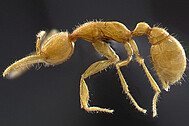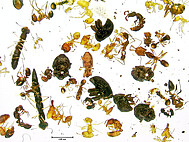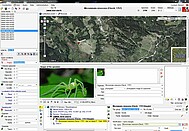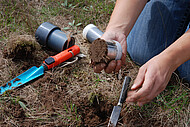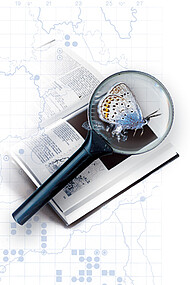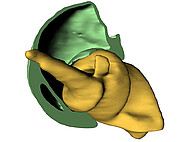Research Focus
Scientific work at the State Museum of Natural History Karlsruhe (SMNK) is usually integrated into areas of research which are defined by long-term projects. It is done in close conjunction with the collections of plants, fungi and animals at the museum. Projects take place as part of national or international research programmes and focus on current relevant questions and on collaboration with other work groups of the same discipline or other fields. Most activities fall into one of the following categories:
Taxonomy and Systematics
This includes the discovery, description and classification of species of plants, fungi and animals. A key area here is archiving voucher specimens in the collections and documenting all related data in databases. One main scientific issue is formulating and testing hypotheses on phylogenetic relationships.
Databasing of Biodiversity Information
Working with electronic databases to record available information on plants, fungi and animals strongly improves data accessibility and usability. Modern database systems make data input, storage, management and analyses of biological data easier. They offer virtual research environments for multiple scientific purposes on a worldwide scale.
Ecosystem Research
Ecosystems are composed of different species and reflect their diversity of genes, forms and functions - their biodiversity. They should be understood as complex entities in which the whole is more than the sum of its parts. Therefore, not only must the components (i.e. organisms, species) be studied, but so must the functions and interactions of the organisms as well as the properties which determine the system's ability to respond to environmental changes. Concepts for the conservation and sustainable use of the natural resources have to be developed, based on description and analysis of historical and current conditions of ecosystems and on studies of anthropogenic factors.
Biogeography
In the context of global change conditions, it has become increasingly important to track and document the historical and current distribution of organisms on earth and analyse the distribution changes caused by natural and anthropogenic factors. A good example of the museum's work here is the series of books "Grundlagenwerke zum Artenschutz in Baden-Württemberg" (Fundamentals on the Protection of Species in Baden-Württemberg), which offers basic data on the occurrence and distribution of plants, fungi and animals for species conservation.
Evolutionary Research
Both extant and extinct organisms are studied to clarify their phylogeny and evolutionary history. Reconstruction of the principles of functionality (mechanics, physiology) is performed both using today's animals and by comparing fossils with the recent fauna. This yields data which are relevant to the field of biomimetics.





